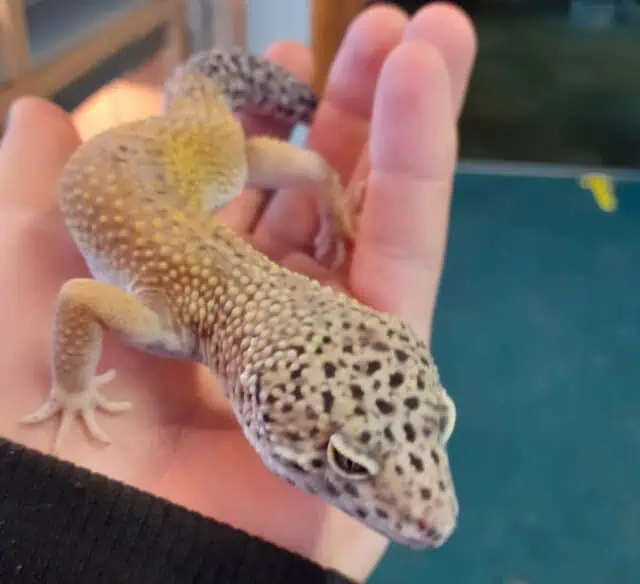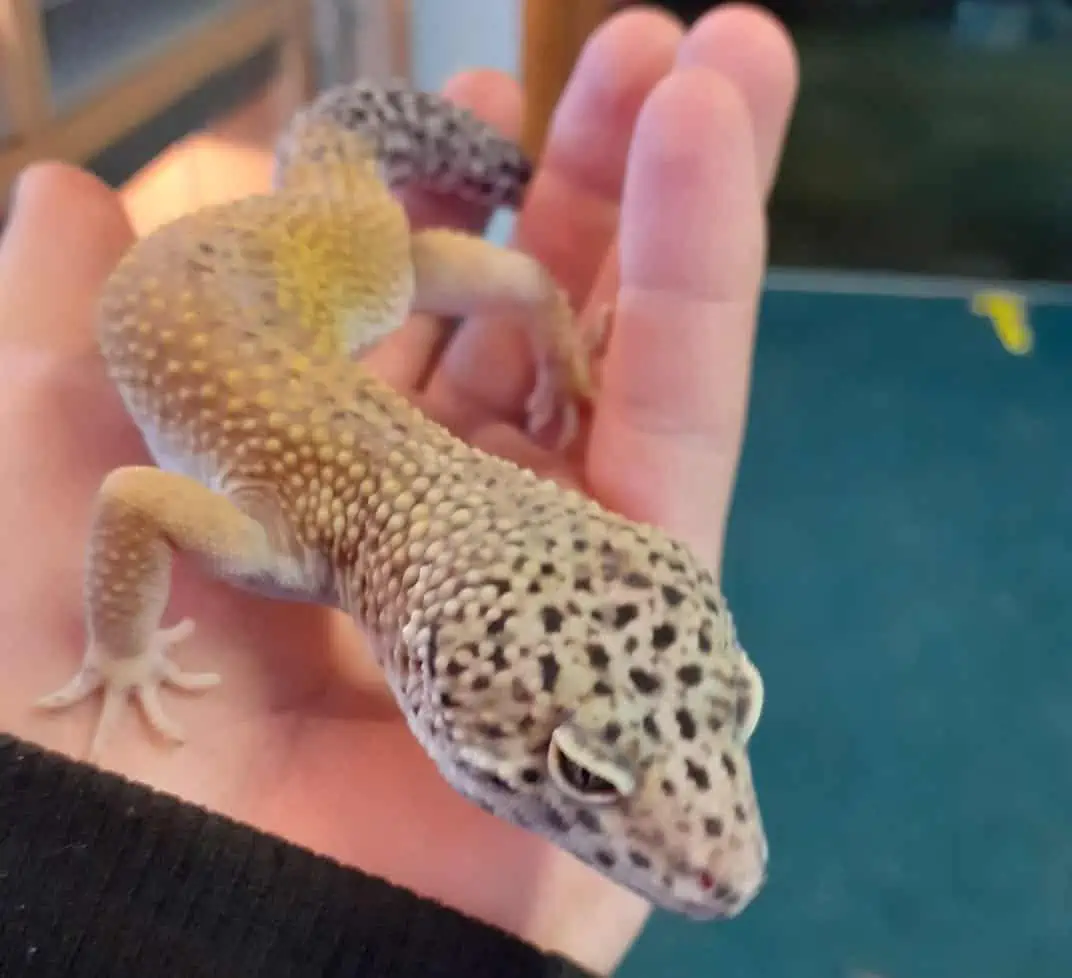Handling a leopard gecko correctly is crucial to maintaining a trusting and stress-free relationship with these fascinating reptiles. This guide provides a thorough overview on gently interacting with leopard geckos, offering insightful tips on creating a positive experience for both the handler and the gecko.
Early Handling: Begin handling leopard geckos from a young age. This helps them become more comfortable and less stressed as they grow, positively impacting their socialization.
Act Calmly: Always approach with slow and gentle movements. Avoid sudden noises or aggressive actions to ensure a stress-free experience for the gecko.
Tail Sensitivity: Never grab a leopard gecko by its tail. This could cause injury, stress, or tail loss. Remember, the tail serves as a defense mechanism.
Trust-Building: Spend time near the gecko’s enclosure without handling. Build trust with methods like sitting close, talking softly, or offering treats.
Proper Pickup Technique: Approach from the side and use a gentle scooping motion. Always support their body properly, avoiding the tail.
How to Handle a Leopard Gecko
When you own a leopard gecko, knowing how to handle them properly is very important. This means being gentle and understanding their needs and signs of stress.
Basic Guidelines for Handling a Gecko

Leopard geckos are delicate creatures, so it’s crucial to handle them with lots of care and gentleness. The basics of gentle handling are easy to follow but super important. Approach your gecko slowly, using calm and slow movements. Quick or sudden movements can scare them, leading to a stressful situation.
When holding a leopard gecko, make sure your handling is comfortable for them. You want to avoid causing any signs of stress, like hissing or trying to escape. Pay attention to their body language. If your gecko seems scared or uncomfortable, it’s best to give them some space and try again later.
Handling Leopard Geckos Should Begin Early On
Starting the handling process early on is essential when it comes to leopard geckos. When they get used to being handled from a young age, they feel more comfortable and less stressed as they grow. It helps them to understand that being handled is a normal and safe part of their lives.
Handling leopard geckos early on can positively influence their socialization and overall behavior. It makes them more accustomed to human interaction, making them friendlier and more relaxed during handling.
This early exposure helps in shaping a leopard gecko that is comfortable and less stressed in various situations, fostering a happier and more harmonious relationship between you and your pet.
Have Patience
Patience is a vital component when handling leopard geckos. It’s crucial to remember that these little reptiles are generally solitary and might feel stressed or uneasy when you first start handling them. Rushing can make them feel threatened, leading to unnecessary stress and even aggression.
Leopard geckos, being solitary by nature, might not be accustomed to interaction and can display signs of stress such as hissing, biting, or trying to flee. It’s critical to move slowly, give them time to adjust, and allow them to come to you at their own pace. This patience and understanding will make the handling experience more enjoyable and stress-free for your gecko.
Rushing the handling process can have several negative effects on your leopard gecko. It can lead to increased stress levels, reluctance to be handled in the future, and can even provoke aggressive behavior. Do it right, and things like teaching them to wear a leash will get easier.
Allow the Leopard Gecko To Get Used To You
Letting your leopard gecko get used to you is an important step before handling. This means spending time near their enclosure without trying to handle them, allowing them to become familiar with your presence and building trust gradually.
By just being near their enclosure, talking to them in a soft voice, and offering treats, you’re helping them associate your presence with positive experiences. This familiarity is crucial as it lays the foundation for trust, which is essential for a stress-free handling experience in the future.
Act Calmly
Acting calmly is essential when you’re handling leopard geckos. These little creatures can get startled easily, so keeping your movements slow and gentle is crucial to avoid stressing them out. When you’re calm, your gecko is more likely to be calm too.
Avoid making sudden loud noises or quick, aggressive movements around them, as it can scare them and make them feel threatened. Instead, be soft in your actions and maintain a serene environment when you’re around your gecko. This includes talking in a gentle, soothing voice and avoiding abrupt changes in light or shadows that could startle them.
How To Pick Up a Leopard Gecko
Picking up a leopard gecko requires a proper technique, emphasizing gentleness and caution to avoid causing them any stress or harm. The approach is equally crucial; approaching them from the side is recommended to minimize the chances of startling them.
To lift a leopard gecko, use a gentle scooping motion, allowing them to step onto your hand. Ensure that your movements are slow and deliberate, providing them enough time to understand your intentions. By doing this, you can significantly reduce their stress and make them feel secure during the process.
Supporting the gecko’s body properly is crucial during handling. Their entire body should be resting on your hand, avoiding any grabbing or pulling on its tail. The tail is a sensitive part of their body and must be treated with utmost care to prevent any injury or stress to your leopard gecko.
Leave The Tail Alone
It’s paramount that you avoid handling or grabbing the leopard gecko’s tail. The tail is not just a body part; it serves as a defense mechanism for the gecko. Grabbing it can cause immense stress and injury, possibly leading to tail loss, a phenomenon where the gecko sheds its tail to escape predators.
Leopard geckos have the capability to regenerate their tails if lost, but the new tail may not look or function exactly like the original one. While it’s a natural defense mechanism, losing a tail is a stressful experience for a gecko and should be avoided whenever possible.





